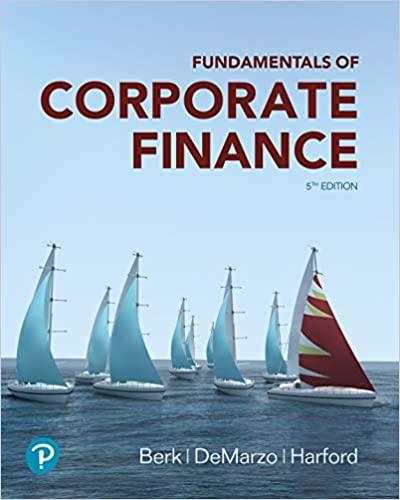Question
Carter has a current wealth of $ 100,000. He is trying to decide how much of his wealth to invest in Treasury bills (a risk-free
Carter has a current wealth of $ 100,000. He is trying to decide how much of his wealth to invest in Treasury bills (a risk-free asset) and a portfolio of bonds. The T-Bill pays a sure return of 2.5% (Rf = .025) and the portfolio has an expected return (Rm) based on the following probability distribution of payoffs:
Probability Payoff (Monetary Flows of Bonds)
.25 $ 800
.50 $ 650
.25 $ 200
Assume that Jack purchased the portfolio of bonds for a price of $ 5,000.
- Calculate the expected return (Rm) and standard deviation (m ) on the portfolio of bonds. Note that both the return and standard deviation must be taken as a percentage of the price of the bond.
- Given your results in part A, calculate the slope of the budget constraint. Provide an intuitive meaning of this slope term.
- If the expected return on the portfolio of bonds and T-Bills (Rp) is 18 % (0.18), what is the risk (p) associated with the portfolio?
What would happen if the risk on the bond portfolio (m) increased? How would this impact a risk-averse individuals optimal risk-return choice? Demonstrate this with the appropriate diagram and carefully explain your results.
Step by Step Solution
There are 3 Steps involved in it
Step: 1

Get Instant Access to Expert-Tailored Solutions
See step-by-step solutions with expert insights and AI powered tools for academic success
Step: 2

Step: 3

Ace Your Homework with AI
Get the answers you need in no time with our AI-driven, step-by-step assistance
Get Started


